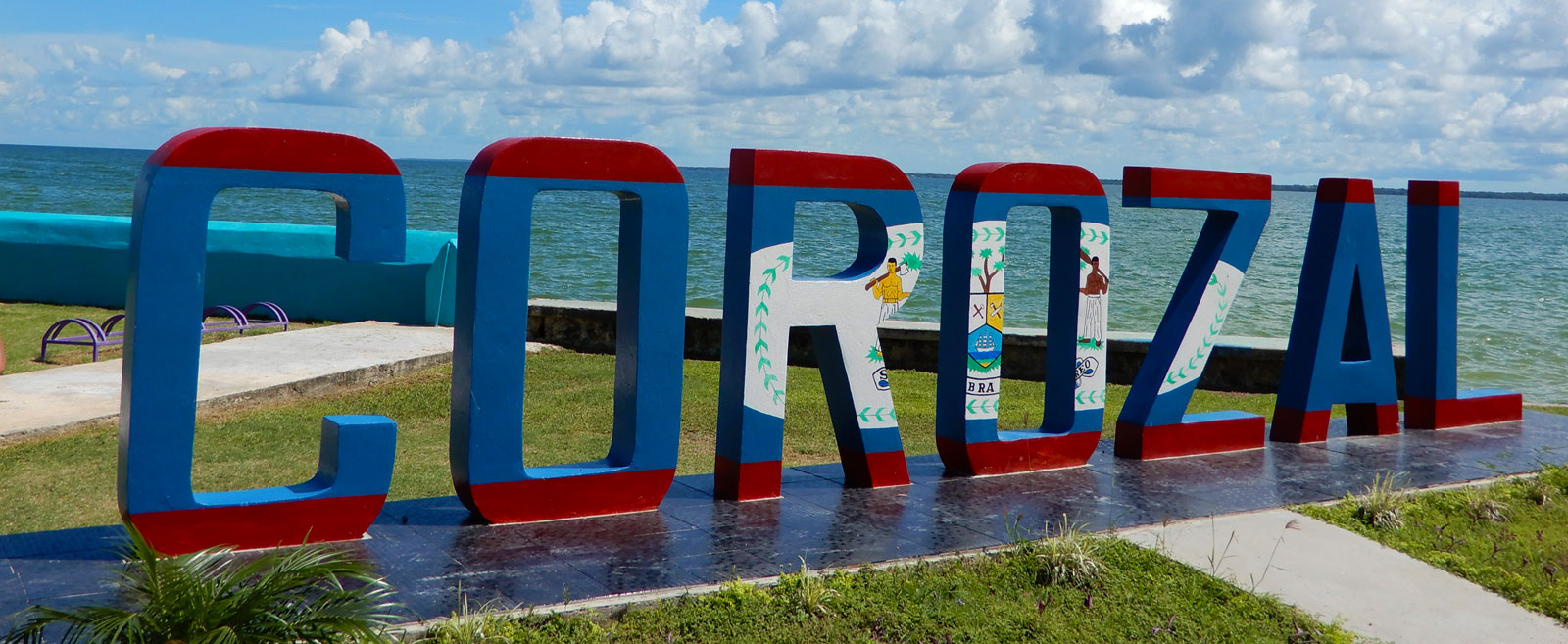Soothing to the senses, the pale blue-green colored waters of Corozal Bay, which hug Belize’s northern most sizable town, place visitors in a serene state of mind. Founded in 1848 by refugees from the Maya Indian uprising against the Spanish in neighboring Yucatan . It’s no wonder the Maya have treasured the bay’s tranquil turquoise waters for centuries. The town of Corozal is a peaceful place with an even more peaceful pace, it paints a memorable portrait never forgotten.
Sprinkled along the shoreline that curves along the bay are brightly colored buildings, homes, and resorts where visitors retreat for quiet getaways.

Corozal, the Maya Yucatecan (name for the cohune palm tree growing wild in the vicinity) is 84 miles north of Belize City and 8 miles away from the Mexican border. Sugar cane fields cover the entire Corozal District. Sugar is the leading industry in the region with the Papaya seconding.
There is more to Corozal District than sugar cane fields, like a 9 mile stretch of waterfront extending from Consejo village with extreme potential for future tourism resort developments.
Corozal Town is the modern incarnation of a city 4,000 years old, built on the foundations of ancient Maya temple Santa Rita.


